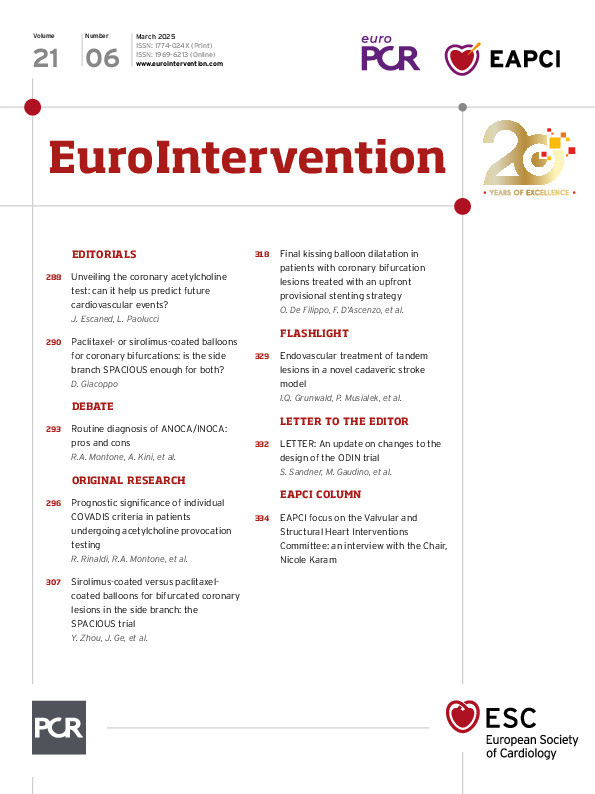What is the role of the Committee?
The EAPCI Valvular and Structural Heart Interventions Committee was created this year to implement the EAPCI Core Curriculum on Percutaneous Valvular and Structural Heart Disease Interventions that was recently published. With my Co-Chair, Fabien Praz, and committee members, we will disseminate the content of the document. In collaboration with the Education Committee, we will promote education to achieve the level of competencies required for these interventions. We also aim to increase awareness surrounding percutaneous treatment of valvular disease and continue to advocate for the best treatment for patients in the rapidly evolving field of structural heart interventions. Working with the European Society of Cardiology (ESC) National Cardiac Societies, we aim to promote patients’ access to transcatheter structural therapies through the Valve for Life initiative and decrease disparities in access to care across countries, as well as among specific subpopulations such as women. Finally, we will also serve as a bridge with the ESC Valve Council, also formed this year.
How does the Committee benefit the community?
Our goal is to both serve the medical community and patients. Promoting awareness and access to care will target the general population and general cardiologists to decrease delays in diagnosis and treatment. The interplay with the Valve for Life initiative will be key to our advocacy work, as it will focus on improving awareness and accessibility of structural interventions across Europe. For the EAPCI community, our aim is to provide structured education and training, foster collaborative research, and advocate for fellows’ access to transcatheter treatment training.
How does the Committee work with the other EAPCI Committees?
Collaboration with other EAPCI Committees is essential to maximise our impact and efficiency. For instance, we work closely with the EAPCI Educational Content, Courses, Webinars Committee to provide shared educational initiatives, such as developing webinars and training modules, and on advocacy efforts to ensure alignment with broader organisational goals. We are also developing close collaborations with other ESC associations and working groups to join our efforts in the structural field.
What are the key projects for your term?
Several key projects are underway:
• Promoting the Core Curriculum on Percutaneous Valvular and Structural Heart Disease Interventions
• Increasing awareness and access to care: several projects are underway in this regard, starting with an assessment of the current situation across the EAPCI countries.
• Educational webinars and courses: we intend to organise a series of webinars throughout the year, focusing on patient management before, during, and after interventions. We will also be active in promoting the ESC Guidelines for valvular disease that will be published in 2025.
• Valve for Life advocacy: we are reimagining the funding model and expanding collaborations with industry and National Cardiac Societies to sustain this critical initiative.
How can EAPCI members become involved in the work of the Committee?
All collaborations are welcome, and we are open to all suggestions that might help us shape the future of structural heart interventions. The committee members have already made several proposals, and we look forward to a great collaboration. We also hope for involvement from the broader EAPCI community, which can take several forms:
• Expanding the EAPCI structural community and building strong networks among members;
• Participating in/proposing research projects within the Committee;
• Collaborating on advocacy efforts;
• Participating in working groups focused on key initiatives;
• Participating in educational sessions or webinars organised in collaboration with the EAPCI Educational Content, Courses, Webinars Committee.

